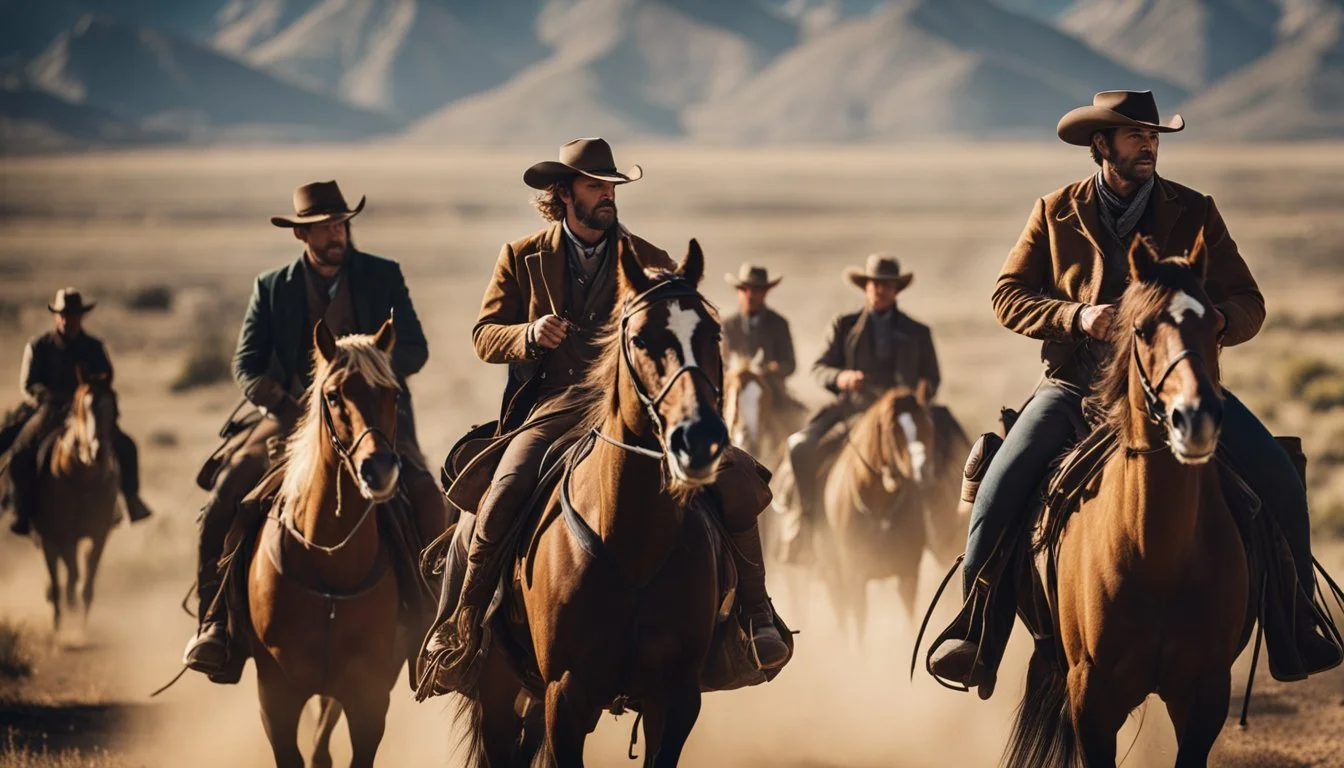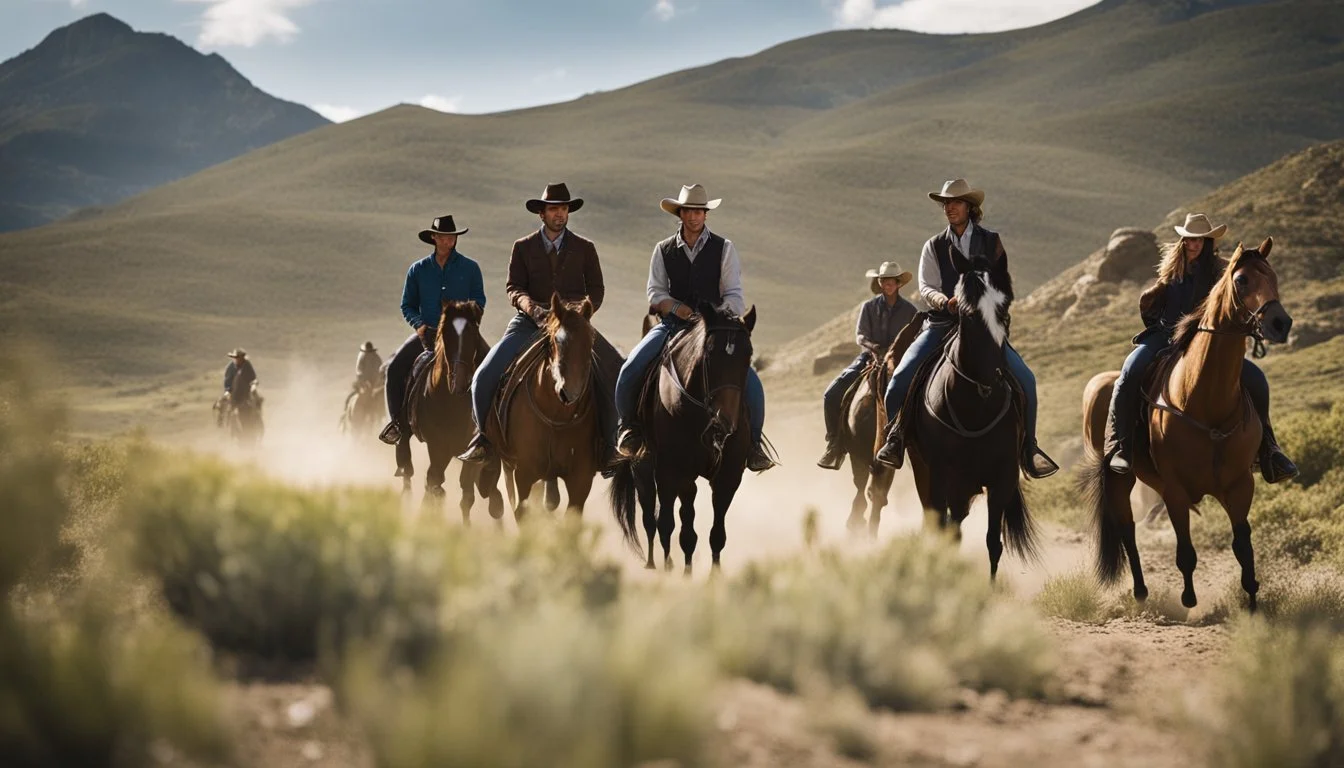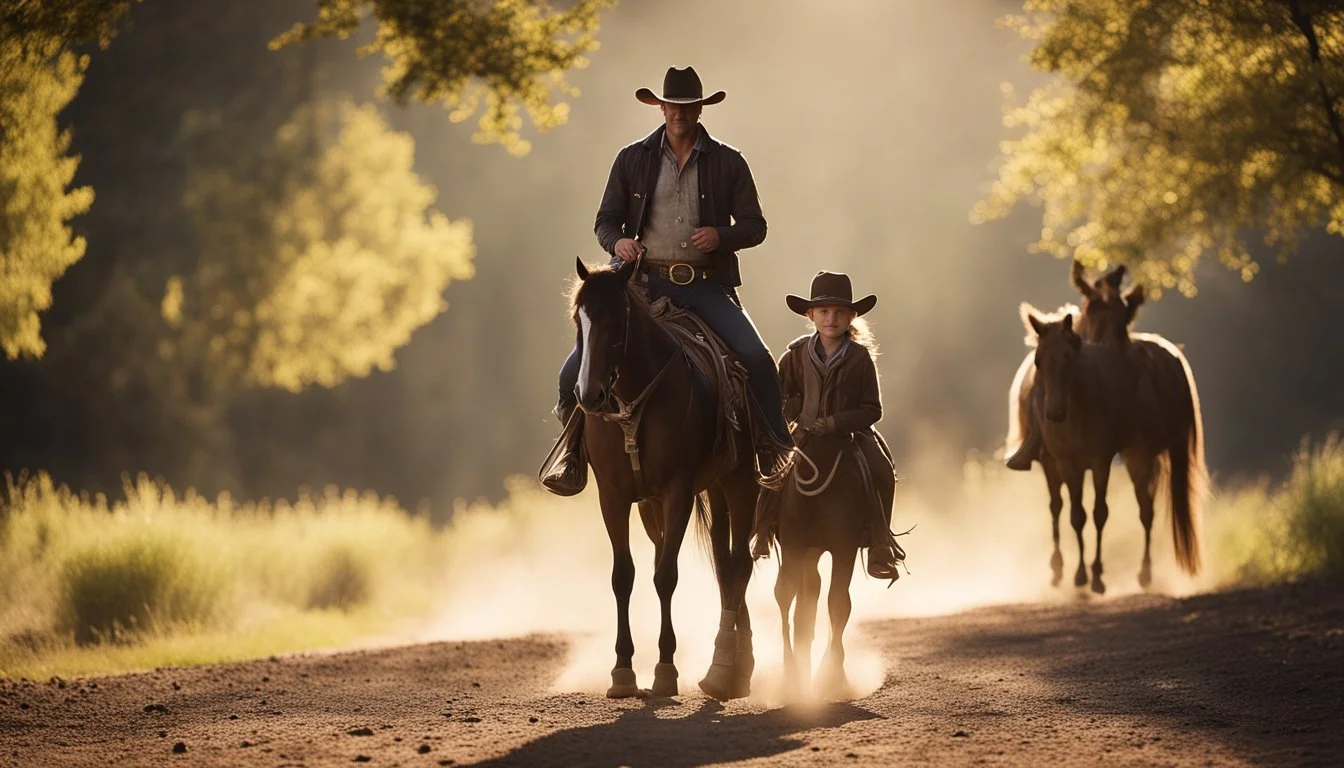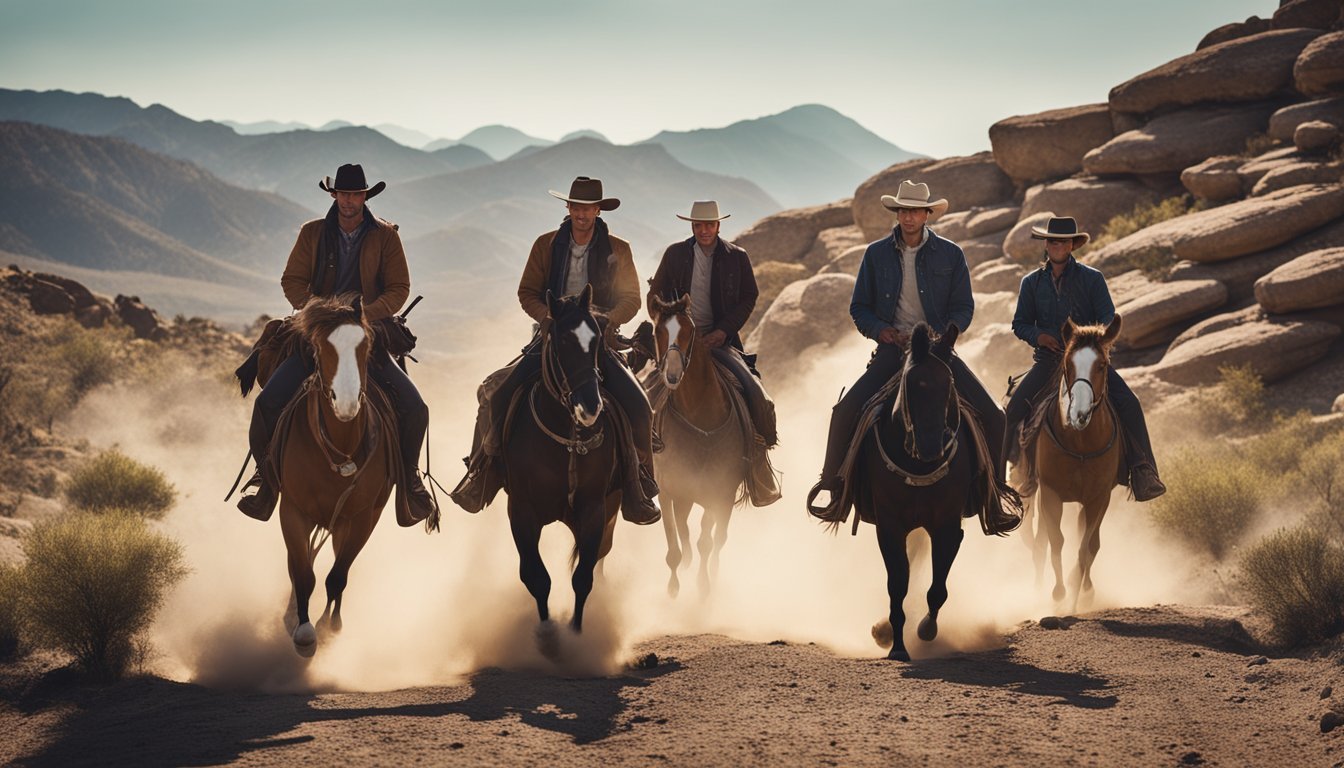Rival Ranch Emerges to Challenge Duttons and Ignite Yellowstone's Power Struggle
Yellowstone's gripping saga of the Dutton family's fight to maintain control over their vast Montana ranch has captivated audiences. The show's intense power dynamics and high-stakes conflicts have become its hallmark. But what if a new challenger emerged to rival the Duttons' dominance?
The introduction of a ranch as powerful as the Yellowstone would fundamentally alter the show's landscape, creating a formidable opponent capable of truly threatening the Duttons' reign. This rival ranch could bring fresh storylines, new alliances, and even more complex political maneuvering to the series.
Such a development would push the Duttons to their limits, forcing them to employ every resource and strategy at their disposal. It would test their unity as a family and potentially expose vulnerabilities in their power structure. The clash between these two ranching titans would likely draw in other players, from local politicians to Native American tribes, reshaping the entire power dynamic of the region.
Backdrop of the Dutton Family Saga
The Dutton family saga spans generations, rooted deeply in the American West. Their story begins in 1883 with James Dutton's westward journey, establishing the foundation of the Yellowstone Dutton Ranch in Montana.
By 1923, Jacob and Cara Dutton take charge of the ranch, facing the challenges of early 20th century America. Their leadership cements the family's growing influence and wealth in the region.
The Duttons' tale is one of perseverance, power, and fierce protection of their land. Through the years, they build a formidable empire, becoming key players in Montana's ranching industry.
Land ownership and rights form the core of the Dutton legacy. Their vast property attracts constant threats from various quarters, including developers and neighboring tribes.
The family's journey through different eras provides rich historical context. It showcases the evolution of the American West and the complexities of maintaining generational wealth.
Family drama intertwines with broader societal issues, creating a compelling narrative. The Duttons' struggles reflect the changing landscape of ranching and land use in Montana.
Their story, told through the main series and its prequels, paints a vivid picture of a family determined to hold onto their legacy at all costs.
The Emergence of a Rival Ranch
A new powerhouse emerges in the Yellowstone universe - the Blackwater Ranch. This sprawling cattle operation rivals the Duttons in size, wealth, and political connections.
The Blackwater family has deep roots in Montana, tracing their lineage back to the 1880s. Their 100,000-acre property borders Yellowstone National Park, giving them strategic leverage.
Led by the cunning matriarch Victoria Blackwater, the ranch poses a serious threat to Dutton dominance. Victoria's shrewd business acumen and ruthless tactics match John Dutton's own.
Key assets of Blackwater Ranch:
Vast water rights
Lucrative government contracts
Cutting-edge agricultural technology
A private security force
The Blackwaters aim to expand their empire, putting them on a collision course with the Duttons. Land disputes, water rights battles, and political maneuvering ensue.
This rivalry ignites a fierce power struggle that reshapes Montana's ranching landscape. Old alliances crumble as both families vie for supremacy.
The conflict extends beyond ranch borders into state politics and big business. Each side deploys their considerable resources to outmaneuver the other.
As tensions escalate, violence seems inevitable. The stage is set for an epic clash between two ranching dynasties fighting for control of Paradise Valley.
Character Dynamics and Conflict
The introduction of a rival ranch as powerful as the Duttons would dramatically alter the character dynamics and intensify conflicts in Yellowstone. This new rivalry would challenge the Dutton family's stronghold and create complex power struggles across multiple fronts.
Key Players in the New Rivalry
John Dutton, as the patriarch of the Yellowstone Ranch, would face a formidable opponent in the leader of the rival ranch. This new antagonist would likely possess similar qualities to John - ruthlessness, strategic thinking, and a deep connection to the land.
The rival ranch's key players might include a mix of experienced ranchers, savvy businesspeople, and political influencers. Each would serve as a counterpart to the Duttons, creating parallel conflicts and alliances.
Local Native American tribes could play a crucial role, potentially aligning with the new ranch to challenge the Duttons' historical claim to the land.
Beth Dutton Vs. New Antagonists
Beth Dutton, known for her fierce loyalty and cunning business tactics, would face new challenges with the rival ranch's arrival. She might encounter a equally ruthless businesswoman or a charismatic male rival who could match her intensity.
Beth's strategies would need to evolve to counter new threats to the Dutton empire. Her personal relationships, especially with Rip, could face strain as she dedicates more time to protecting the family's interests.
The rival ranch might exploit Beth's past traumas or current vulnerabilities, forcing her to confront unresolved issues while defending the Yellowstone.
Jamie Dutton's Political Maneuvering
Jamie Dutton's role as a political insider would become even more crucial with a new powerful player in the region. His loyalty to the Dutton family would be tested as the rival ranch attempts to sway him with political opportunities or blackmail.
Jamie might find himself caught between his family and his ambitions, forced to make difficult choices that could have far-reaching consequences for Montana's political landscape.
The rival ranch could exploit Jamie's complicated relationship with his adoptive family, potentially offering him a sense of belonging he's always craved.
Kayce Dutton's Loyalty and Struggles
Kayce Dutton's position as a bridge between the Dutton family and the local Native American community would become more complex with the arrival of a rival ranch.
His military background and leadership skills might be put to the test in direct confrontations with the new ranch's enforcers. Kayce could face moral dilemmas as the conflict escalates, questioning the methods used to protect his family's legacy.
The rival ranch might attempt to exploit Kayce's connection to his wife's Native American family, creating tension between his two worlds and forcing him to choose sides in the escalating conflict.
Socio-Economic and Environmental Themes
The introduction of a rival ranch as powerful as the Duttons would amplify existing socio-economic and environmental tensions in Yellowstone. This scenario would highlight conflicts between preservation and development, traditional and modern ranching practices, and sustainable resource management.
Land Preservation Vs. Economic Development
The clash between land preservation and economic development would intensify with a new powerful ranch. Both ranches might vie for land acquisition, potentially threatening protected areas. Conservation easements could become a contentious issue, with ranches negotiating to maintain their operations while preserving critical habitats.
Economic pressures might lead to proposals for commercial developments on ranch lands. This could include tourism ventures, resource extraction, or real estate projects. Such initiatives would likely face opposition from environmental groups and local communities concerned about preserving the area's natural beauty and ecological integrity.
The ranches' influence on local politics and regulations would be significant. They might lobby for policies favoring their interests, potentially altering zoning laws or environmental protections.
Modern Ranching Practices
The rival ranches would likely differ in their approach to ranching, showcasing the contrast between traditional and modern methods. One ranch might embrace technological innovations like precision agriculture, drone monitoring, and advanced animal tracking systems. The other could stick to time-honored practices, emphasizing the value of traditional knowledge and skills.
These differences would highlight debates about efficiency, animal welfare, and the changing nature of ranch work. Modern practices might increase productivity but could also lead to job losses or changes in the traditional ranching lifestyle.
Environmental impacts would vary between the two approaches. Modern methods might reduce some forms of environmental stress but could introduce new challenges, such as increased energy consumption or reliance on complex technologies.
Resource Management and Sustainability
With two powerful ranches competing for resources, sustainable management would become crucial. Water rights would be a primary concern, especially in drought-prone areas. The ranches might need to implement water conservation measures or negotiate complex agreements for shared usage.
Wildlife management would present another challenge. The ranches would need to balance their cattle operations with the needs of native species, potentially leading to conflicts over grazing areas or predator control measures.
Soil conservation and rangeland management practices would be critical for long-term sustainability. The ranches might explore rotational grazing, native plant restoration, or other techniques to maintain healthy grasslands.
Energy use and carbon footprint would also be important considerations. The ranches might invest in renewable energy sources or implement carbon sequestration practices to enhance their environmental credentials and operational efficiency.
Influence of Media and Fan Reception
Yellowstone's meteoric rise to popularity has been fueled by intense media coverage and an enthusiastic fan base. The series, created by Taylor Sheridan, has become a cultural touchstone, sparking conversations across various platforms.
Social media plays a crucial role in Yellowstone's success. Fans eagerly discuss plot twists, character developments, and theories on platforms like Twitter and Reddit. This engagement helps maintain interest between episodes and seasons.
Critical acclaim has also bolstered the show's reputation. Yellowstone has garnered praise for its cinematography, performances, and storytelling. Several award nominations have further cemented its status in the television landscape.
Paramount+ has leveraged Yellowstone's popularity to expand its streaming offerings. The platform hosts spin-offs and related content, catering to the growing demand for more stories set in the Yellowstone universe.
Fan events and conventions have emerged, allowing viewers to immerse themselves in the world of the Duttons. These gatherings often feature cast appearances, exclusive merchandise, and behind-the-scenes insights.
Media coverage extends beyond entertainment news. Yellowstone's portrayal of ranching life and land disputes has sparked broader discussions about the modern American West in mainstream publications.
Expansion of the Yellowstone Universe
The Yellowstone franchise has grown beyond its original series, exploring different eras of the Dutton family saga. New spin-offs and prequels delve into the rich history of Montana and the Western frontier.
Upcoming Spin-Offs and Prequels
Taylor Sheridan, the creator of Yellowstone, has ambitious plans for expanding the universe. "1883" and "1923" have already captivated audiences with their historical narratives. New series are in development, including "6666" set on a Texas ranch and "1944" exploring another pivotal era for the Duttons.
Paramount Network is investing heavily in these spin-offs, recognizing the franchise's popularity. While Kevin Costner's involvement in future projects remains uncertain, the focus is shifting to new characters and time periods.
Integration of Historical Narratives
The Yellowstone prequels masterfully weave historical events into the Dutton family story. "1883" portrays the arduous Western journey of the family's ancestors. "1923" tackles the challenges of Prohibition and the Great Depression.
These series offer a unique blend of fictional storytelling and historical accuracy. They provide context for the modern-day conflicts seen in the original Yellowstone series. By exploring different eras, the franchise creates a rich tapestry of Western American history through the lens of one family's enduring legacy in Montana.
The Influence of Legacy on Future Generations
The Dutton family's legacy shapes the aspirations and challenges faced by each new generation. This inheritance extends beyond land and wealth, encompassing values, responsibilities, and an enduring connection to the Yellowstone Ranch.
The Dutton Children's Inheritance
John Dutton III's children face unique pressures as heirs to the Yellowstone legacy. Beth, Jamie, and Kayce must navigate their father's expectations while forging their own paths. Their choices reflect the weight of family history and the ranch's future.
Beth's business acumen and fierce loyalty position her as a potential successor. Jamie's legal expertise offers a different avenue for protecting family interests. Kayce's connection to the land and ranching lifestyle aligns closely with traditional Dutton values.
Each sibling grapples with personal ambitions and familial duty. Their decisions will shape the next chapter of the Dutton saga.
Visions for the Future of the Ranch
John Dutton III's vision for Yellowstone's future clashes with external forces and evolving family dynamics. He strives to preserve the ranch's vast acreage and traditional way of life against modernization and development pressures.
The younger Duttons may envision alternative paths for the ranch's survival. These could include sustainable farming practices, eco-tourism initiatives, or strategic partnerships with neighboring tribes.
Tate Dutton, as the youngest generation, represents a bridge between tradition and progress. His upbringing on the ranch, combined with his mixed heritage, may offer fresh perspectives on land stewardship and family legacy.
The ranch's future hinges on balancing preservation with adaptation, ensuring the Dutton legacy endures in a changing world.
Challenges and Opportunities
The introduction of a rival ranch as powerful as the Duttons would reshape the dynamics of Yellowstone's landscape. This new force would present both threats and potential alliances, altering the balance of power in the region.
Threats to the Duttons' Control
A rival ranch of equal strength would pose significant challenges to the Duttons' dominance. This new player could compete for land, resources, and political influence. They might outbid the Duttons on property acquisitions or leverage connections to sway local policies.
The rival ranch could attract skilled workers, potentially luring away key Yellowstone employees. This would strain the Duttons' operations and weaken their grip on the area's workforce.
Market Equities might see an opportunity to pit the two ranches against each other, exploiting their rivalry for corporate gain. This could accelerate development plans and threaten both ranches' traditional ways of life.
Alliances and Strategic Relationships
The new ranch could form unexpected partnerships. An alliance with Thomas Rainwater and the Broken Rock Reservation might shift the balance of power against the Duttons.
Conversely, the Duttons might seek to collaborate with their new rivals against common threats. This could lead to a temporary truce to combat modernization efforts or preserve ranching traditions.
External threats like government regulations or environmental challenges could force both ranches to cooperate. They might jointly lobby for policies favorable to large-scale ranching or share resources during natural disasters.
Strategic marriages or business partnerships between the families could emerge as a way to consolidate power and ensure long-term stability in the face of changing times.
Cinematic Elements and Filming Quality
Yellowstone's stunning cinematography sets a high bar for visual storytelling on television. The show utilizes breathtaking Montana landscapes as a backdrop, effectively turning the environment into a character itself.
On-location filming in Montana and Utah adds authenticity to the series. This approach captures the rugged beauty of the American West with cinematic precision, enhancing the viewing experience.
The show's cinematographers work closely with local experts to accurately depict ranch life and landscapes. This attention to detail contributes to the series' realism and immersive quality.
Filming locations play a crucial role in Yellowstone's visual appeal. The vast, open spaces and dramatic mountain vistas provide a sense of scale that complements the show's epic storytelling.
Kevin Costner's presence as John Dutton adds gravitas to the series. His performances are often framed against expansive natural backdrops, emphasizing his character's connection to the land.
Yellowstone Season 5 continues to maintain the high production values established in earlier seasons. The cinematography remains a key element in conveying the power struggles and personal dramas unfolding on screen.








